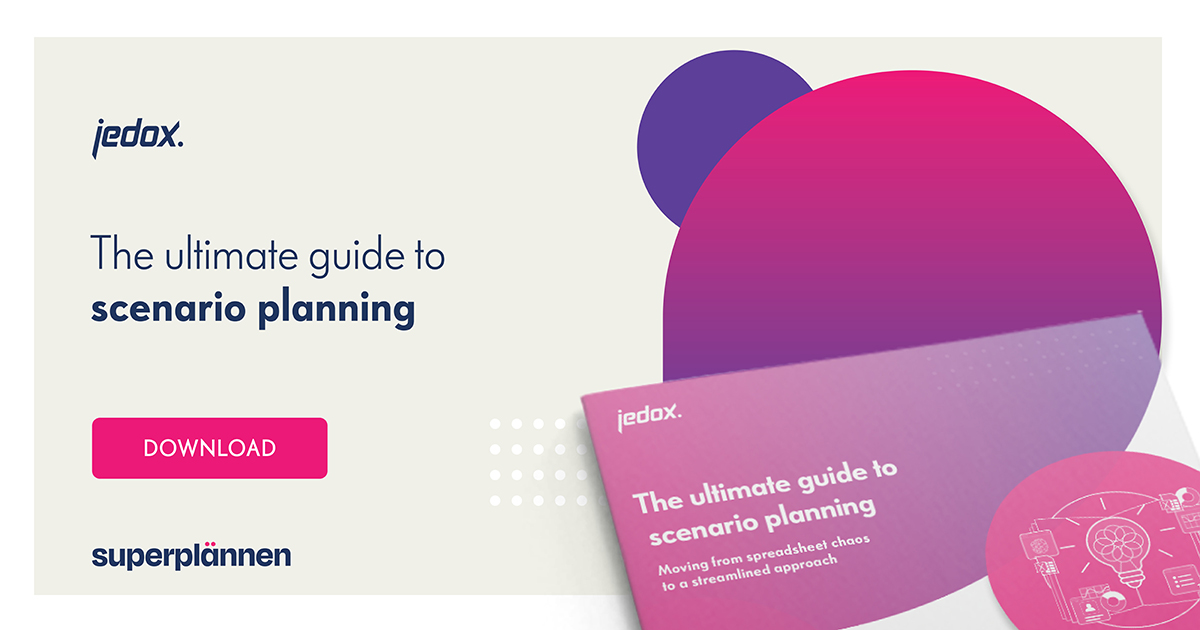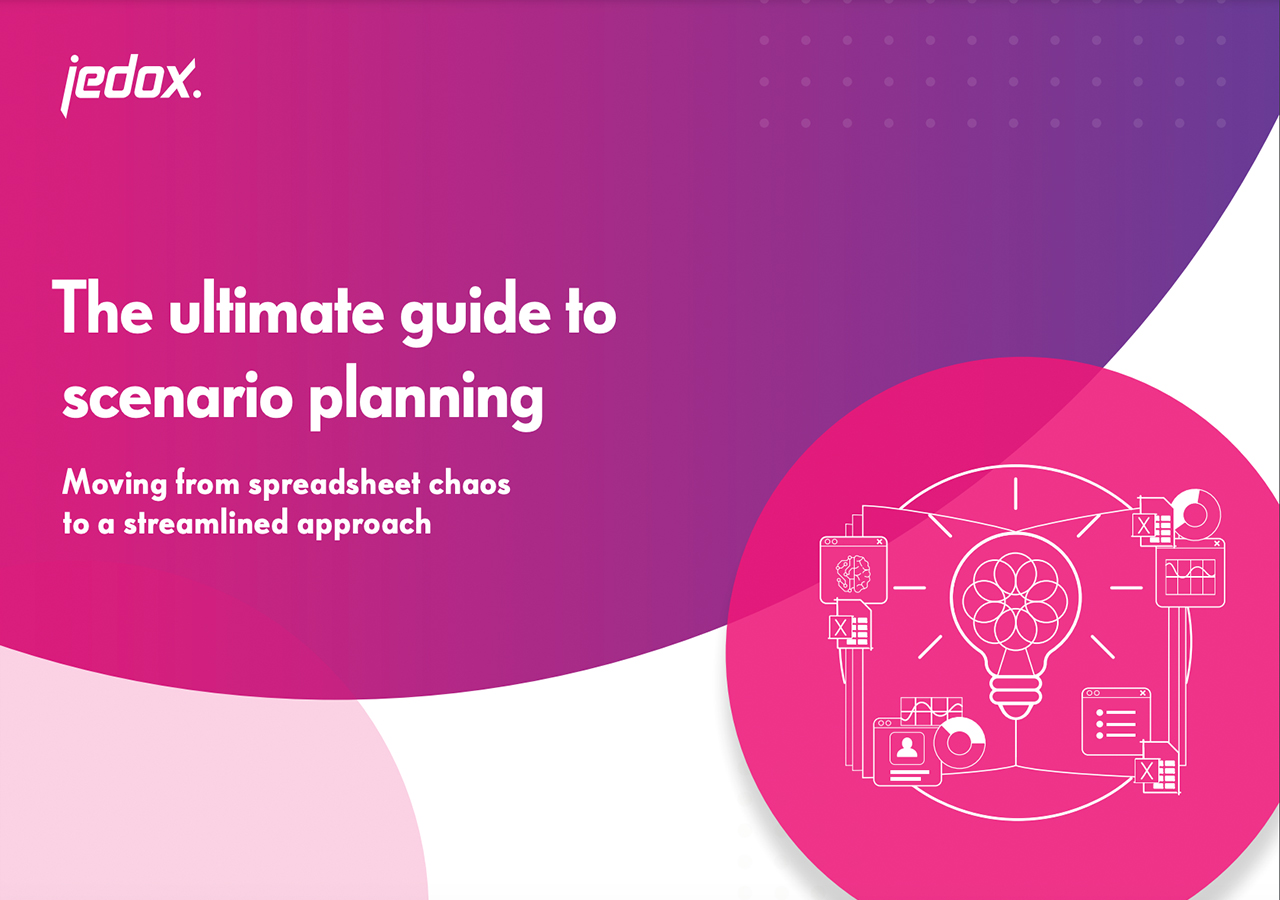
6 ways scenario planning elevates decision-making for CFOs
Chief finance officers (CFOs) must embrace their role as strategic advisors – a role that requires consistent interaction with people across all departments. Amid heightened uncertainty, an even stronger partnership between CFOs and the broader organization is needed to collaboratively shape strategies for navigating a volatile, uncertain, complex, and ambiguous (VUCA) world.1 Boards and other stakeholders are looking to CFOs to help provide answers and make critical decisions that will have a lasting impact.
Being an effective storyteller and strategic partner requires a deep understanding of corporate objectives, alignment with diverse stakeholders, and effectively communicating data-backed insights. For example, in an inflationary environment, CFOs must communicate the organization’s response to multiple audiences. They may provide data on rising costs and present a strategy centered on optimizing the supply chain. By tailoring communication to employees or shareholders, the CFO can instill confidence in the organization’s ability to overcome economic challenges.
With these objectives in mind, scenario planning is a valuable tool for envisioning multiple “what-if” scenarios and outlining an optimal plan for each one. CFOs can leverage scenario planning to proactively anticipate challenges such as inflation, increased labor costs, shifting customer demands, and emerging environmental, social, and governance (ESG) regulations. Through strategic scenario planning, CFOs can solidify a holistic, forward-looking strategy that embraces potential uncertainties and complexities, ensuring an adaptable approach to planning.
Finance leaders can leverage scenario planning in the following ways to establish a clear vision of the future and elevate decision-making:
1. Cross-organizational collaboration
Strategic scenario planning encourages collaboration between departments by allowing them to explore different scenarios together, identify areas for improvement, and develop solutions that benefit the entire organization. Bringing diverse perspectives, expertise, and insights into the process fosters an inclusive culture and ensures comprehensive consideration of all potential outcomes. Instead of working in isolation, finance teams collaborate closely with sales, human resources (HR), procurement, and other departments to gather insights into possible disruptions and their consequences.
Through this collaborative effort, CFOs gain a comprehensive understanding of the interdependencies and potential risks across different functions. They can then present these scenarios to the board and other stakeholders, telling a story that not only includes financial projections but also a holistic view of how disruptions may impact the organization’s overall performance.
2. Proactive risk management
Unpredictable events can swiftly disrupt previously perceived strengths. For example, many retailers considered their store footprint at major malls to be a strength until the COVID-19 pandemic prompted a surge in online shopping and contactless transactions, fundamentally altering consumer behaviors. Such events underscore the importance of effective risk management.
Scenario planning empowers CFOs to anticipate and plan for a range of potential risks, from transportation delays to fluctuations in demand for specific products. These insights strengthen their ability to articulate possible risks and opportunities, as well as link them to various courses of action. As a result, finance leaders and stakeholders are prepared to minimize risk and guide their organization through periods of uncertainty with confidence.
3. Planning for long-term growth
In addition to considering all potential outcomes associated with a particular event, scenario planning enables finance leaders to gain a long-term view and ensure sustained growth. By envisioning multiple scenarios, they can assess how various factors, such as price fluctuations and regulatory changes, may impact the organization over time. This long-term view enables CFOs to develop future-proof strategies and build resilience, aligning financial decisions with the organization’s overarching goals.
For example, they can develop an accurate long-term growth plan for future workforce needs. By creating scenarios encompassing market changes, work preferences, and talent availability, CFOs can proactively address potential skill gaps and requirements for an increasingly hybridized workforce. Guided by these data-driven narratives, organizations are equipped to build the workforce they need to accomplish their goals.
4. Competitive advantage
Competition is intensifying across industries as new entrants and disruptive technologies continue to emerge. If a competitor launches a superior product and the organization is unable to respond with a comparable offering for at least six months, how should teams respond? Scenario planning provides a structured approach for anticipating and strategizing for such situations.
Scenario planning equips CFOs to assess the potential impact of a competitor’s move, identify risks and opportunities, and implement a well-informed strategy that aligns with the organization’s financial goals. For example, they can help inform impactful product improvements, targeting a niche segment, partnering with other manufacturers, or diversifying into related markets, as well as make necessary adjustments based on emerging trends.
5. Enhanced accuracy and reliability
Instead of relying on intuition, scenario planning offers a comprehensive, structured approach to financial planning, even more so if it involves a proper scenario planning software. This involves modeling various scenarios, analyzing their potential impact, formulating corresponding strategies, monitoring performance, and adjusting strategies as needed. By openly discussing different possible outcomes and delivering adaptable strategies, CFOs can build confidence among stakeholders that plans are robust and adaptable to unforeseen circumstances.
Predictive forecasting adds another layer of data accuracy to scenario planning. CFOs can leverage artificial intelligence (AI) and machine learning tools to automatically identify trends, patterns, insights, forecast bias, and anomalies. This alignment of historical data with forward-looking projections instills confidence that the scenarios presented are well-informed and backed by a comprehensive analysis.
6. Driving innovation
Innovation is becoming increasingly important for maintaining a competitive edge and creating value for customers, positioning CFOs to boost efficiency, spearhead transformation, and drive profitable growth. According to a recent BARC topical survey,3 the use of predictive planning is skyrocketing: one in four organizations already use predictive algorithms and machine learning productively as they seek ways to produce their plans and forecasts in less time, with less effort, and with better and more accurate results. Scenario planning is an area in which CFOs can explore opportunities for innovation and develop strategies to capitalize on them.
A cloud-based planning tool, such as Jedox, makes it easier to collaborate, implement external drivers, and use AI to illuminate trends and compare scenarios. The Jedox Add-in for Excel 365 and AIssisted™ Planning tools can help any organization streamline their process and uncover insights that would otherwise go unnoticed.
Conclusion
Scenario planning is an invaluable way for finance leaders to gain a holistic understanding of their organization and its future trajectory. This sets the foundation for data-backed strategies that ensure sustainable long-term success. By boosting collaboration and prioritizing effective communication throughout the whole scenario planning process, CFOs can gather rich insights and develop a plan that inspires confidence and ensures resilience. When executed properly, scenario planning is more than a financial tool – it’s an integrated approach to managing uncertainty and visualizing the future.
Sources
1 Jedox, Adapting to an inflationary environment, 2022
2 FP&A Trends, FP&A Trends Survey, July 2022
3 BARC, Predictive Planning and Forecasting on the Rise – Hype or Reality, 2022
4 Jedox, Preparing for the future: The power of scenario planning, 2023












